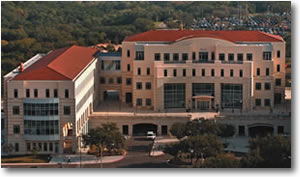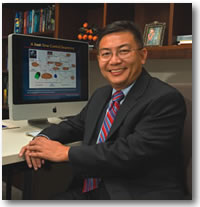News
UTSA Attains Recognition through reputable rankings

The University of Texas at San Antonio acquires regard from the prestigious Times Higher Education World University Rankings. Times Higher Education (THE) rankings are the only global university performance tables to evaluate universities based on teaching, research, knowledge transfer and international outlook.
“It is such an honor for UTSA to be recognized among this new generation of universities across the world,” stated UTSA President Ricardo Romo.
“It speaks to the culture of excellence that thrives at UTSA and is another affirmation of our progression to Tier One status as a research institution,” Romo continued.
Top 100 world universities under 50 years old
UTSA is ranked among the world’s top 100 universities under 50 years old and it holds its place as number 70 of the U.S. institutions ranked by Times Higher Education. The rankings are based on performance indicators including research, citations, teaching, international outlook and industry income. UTSA is one of only eight U.S. universities ranked in Times Higher Education’s list of top young institutions around the world.
In the area of research, three indicators including the university’s research volume, income and prestige, determined the ranking. The research volume indicator provides a sense of the institution’s productivity in regard to the number of papers published by each academic staff member in the academic journals indexed by Thomson Reuters.
The performance indicator of citations examines an institution’s research influence through the number of times its published works were cited by scholars around the world. The data is composed based on the 12,000 academic journals indexed by Thomson Reuters’ Web of Science database and include all indexed journals published in the five years between 2006 and 2010. Citations made in the six years between 2006 and 2011 are also included in order to stabilize the results.
The teaching category’s indicators were based on the Thomson Reuters Academic Reputational Survey which evaluates criteria such as faculty-to-student ratio, ratio of Ph.D. to bachelor’s degrees awarded by each institution and institutional income scaled against academic staff members.
The international outlook category looked at campus diversity and university’s faculty collaboration with international colleagues on research projects. Competing in a global market for undergraduates and postgraduates was also an influential indicator which was measured by the ratio of international to domestic students.
UTSA had a higher overall score compared to last year’s ranking due to increased individual scores in the categories of teaching, international outlook, industry income and research.
Industry income changed the most with a 6.9 increase in score over last year’s ranking results. This increase is most likely due to the strategic growth and continuing development of the UTSA Office of Commercialization and its role in protecting unique faculty and student discoveries , as well as its role in formalizing new research partnerships with organizations in the United States and abroad, making it easy for industry collaborators to partner with UTSA.
The other U.S. universities to make the list include Florida International University; George Mason University; University of California at Irvine; University of California at Santa Cruz; University of Illinois at Chicago; University of Maryland, Baltimore County; and University of Texas at Dallas.
“These are exciting times for anyone involved in education, and Times Higher Education’s pioneering 100 Under 50 ranking not only provides a welcome insight into the rising stars of global higher education, but also heralds a shifting world order in innovation and research. In my opinion, it is the best ranking of its kind,” stated Antony Seldon, Headmaster of Wellington College, in an article published by Reuters.
UTSA Honors 16 Researchers for Innovation

Yusheng Feng
UTSA President Ricardo Romo, Interim Vice President for Research Mauli Agrawal and the UTSA Office of Commercialization and Innovation recognized 16 researchers yesterday with UTSA Innovation Awards. The inaugural awards spotlighted the efforts of UTSA scholars who have greatly contributed to creating a university environment that promotes innovation and the commercialization of research discoveries.
Thirteen of the 16 recipients were honored for receiving patents during the past fiscal year. They included:
- Sos Agaian, Department of Electrical and Computer Engineering
- David Akopian, Department of Electrical and Computer Engineering
- Arturo Ayon, Department of Physics and Astronomy
- Rajendra Boppana, Department of Computer Science
- James Chambers, Department of Biology
- Neal Guentzel, Department of Biology
- Karl Klose, Department of Biology
- George Negrete, Department of Chemistry
- Robert Renthal, Department of Biology
- Dhiraj Sardar, Department of Physics and Astronomy
- Bruce Smith, Department of Electrical and Computer Engineering
- Richard Tangum, Department of Architecture
- Jieh-Juen Yu, Department of Biology
Additionally, Bernard Arulanandam, assistant VP of research support and UTSA’s Roland K. and Jane W. Blumberg Professor in Bioscience, and Banglin Chen, professor of chemistry were presented with the licensing revenue their respective discoveries generated during FY 2013.
Mechanical engineering professor and department co-chair Yusheng Feng was named UTSA’s Innovator of the Year. The award recognized Feng’s research on the use of nanoparticles for cancer treatment as well as his work in computational modeling and visualization. Feng oversees UTSA’s Advanced Visualization Laboratory.
Since fiscal year 2008, UTSA has built a robust entrepreneurial ecosystem to encourage faculty and students to develop and commercialize innovative products and discoveries. That environment includes:
- academic programs of study to spur entrepreneurship and technology management, technology development and technology transfer;
- research administration support through the UTSA Office of the Vice President for Research and the Office of Commercialization and Innovation that includes a clear invention disclosure and patenting process as well as a structure to help researchers explore licensing partners;
- generous royalty policy, by higher education industry standards, that allows UTSA researchers to split revenue from license fees and royalties with the university 50/50;
- a New Venture Incubator to help UTSA faculty and students move their ideas from the university to marketplace;
- the bi-annual Center for Innovation and Technology Entrepreneurship (CITE) Boot Camp, a daylong crash course allowing entrepreneurs from throughout the region to explore key topics to nurture a successful start-up;
- CITE’s $100,000 Student Technology Venture Competition, which allows undergrads the opportunity to develop and market an actual technology before they graduate;
- a regional network of partners and supporters such as the Commercialization Council, an elite group of C-suite executives dedicated to creating an entrepreneurial ecosystem in San Antonio, and SBIR, STTR and ETF partnerships, among others.
Those efforts have proven beneficial. Over the past five years (FY 09 vs. FY 13), UTSA has increased its annual:
- commercial memoranda of understanding and nondisclosure agreements from 31 (FY 09) to 52 (FY 13)
- new invention disclosures from 24 to 62
- patents filed from three to 76
- students competing in the $100K Student Technology Venture Competition from 98 to 128
- entrepreneurs trained in the UTSA CITE Boot Camp from 155 to 295
- incubated companies from 3 to 13.

